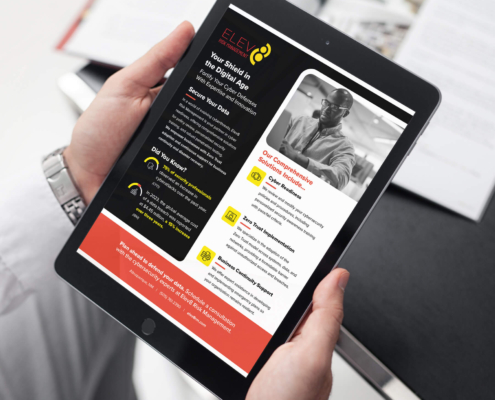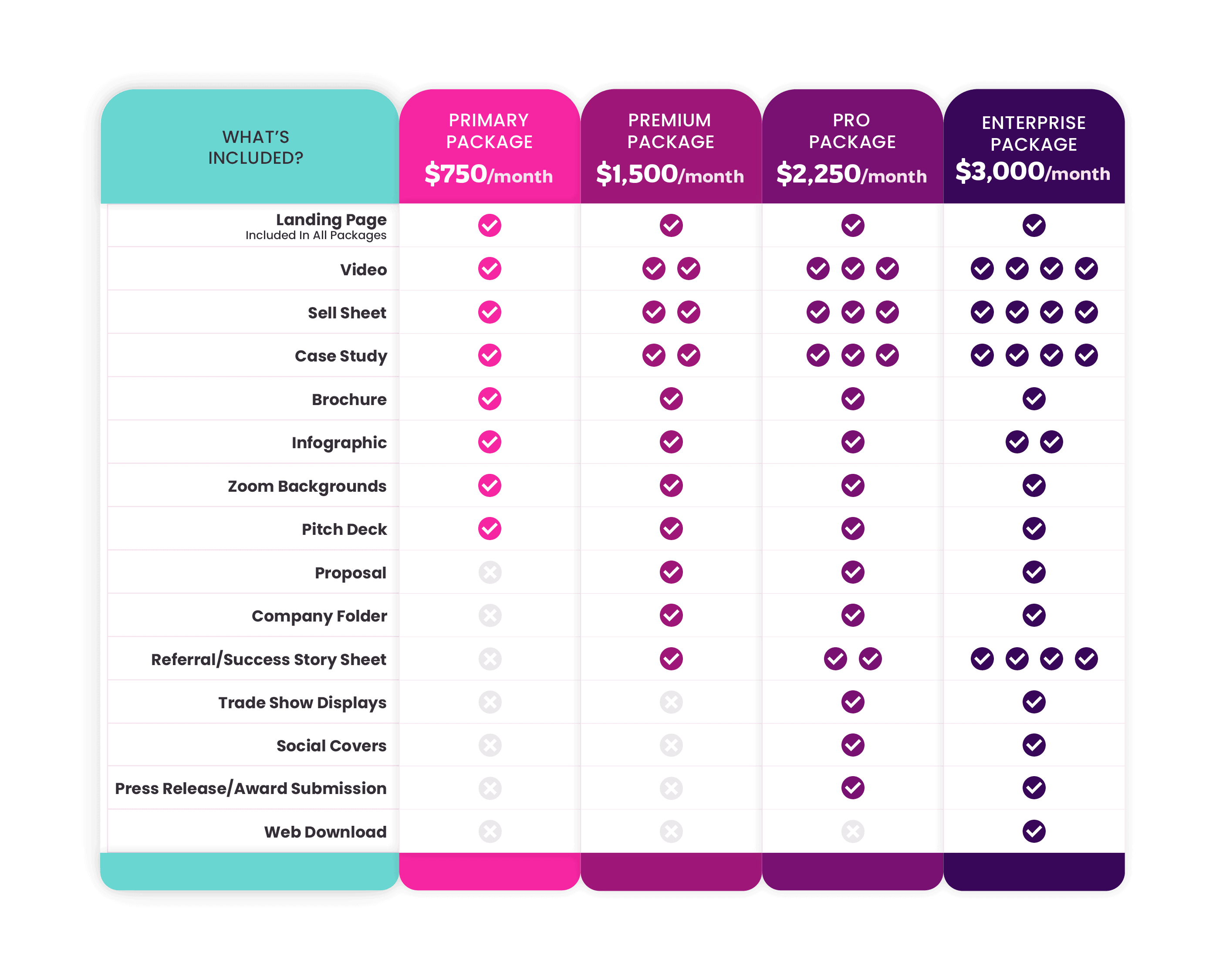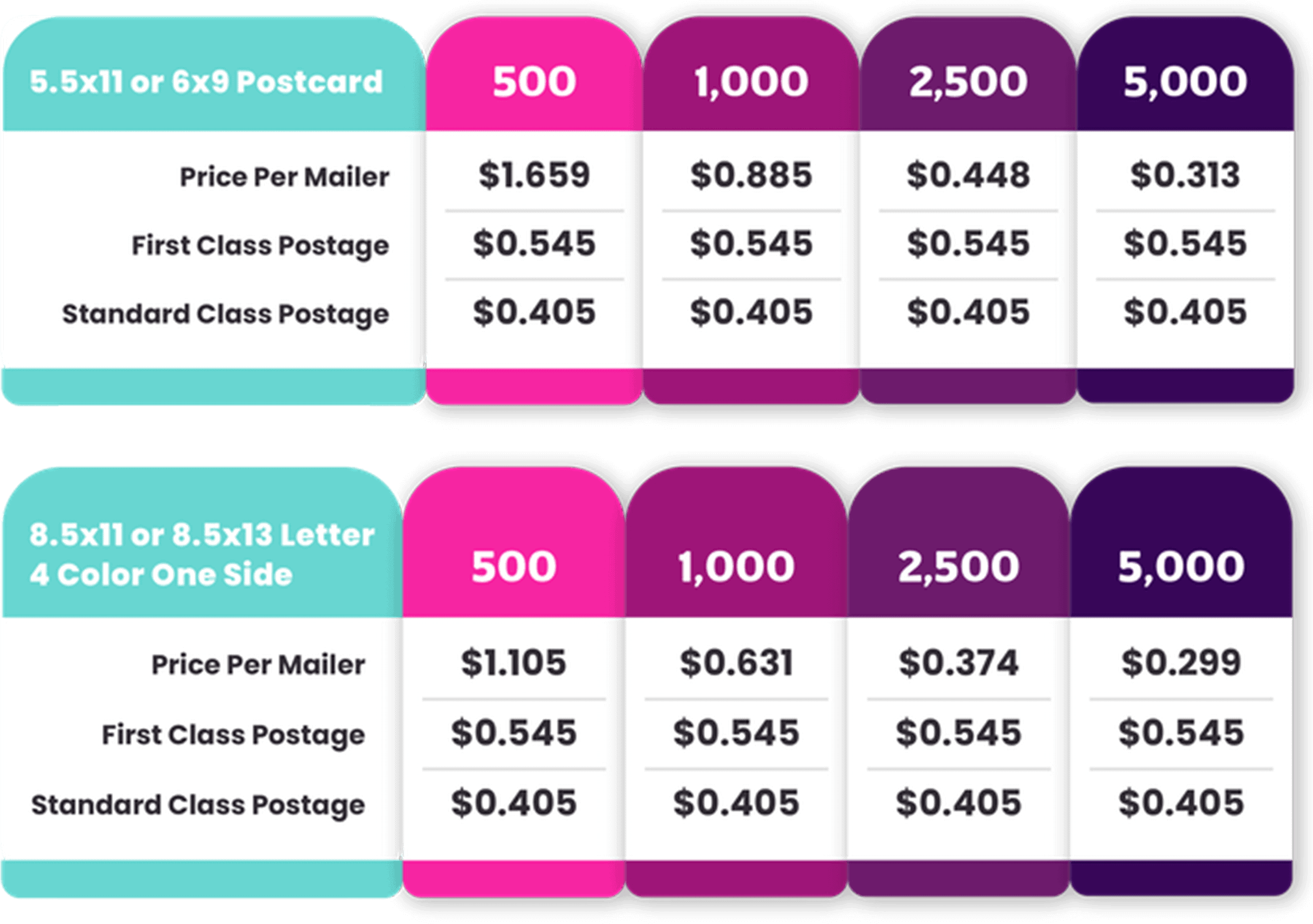Guide to Creating Sell Sheets
Crafting a sell sheet that captures attention and convinces potential buyers or investors of your product’s worth is indeed an art form. In the bustling marketplace of ideas and products, standing out is more than a goal—it’s necessary.
Here, at Creative Sweets, we understand the power of first impressions and the magic of a perfectly crafted sell sheet. Through this guide, we’re peeling back the curtain to share the secrets of designing sell sheets that turn heads and seal deals. Ready to embark on a journey that transforms your product into the talk of the town? Let’s dive in!
The Sweet Spot of Marketing Materials
The sell sheet reigns supreme in the realm of marketing materials. But what exactly is a sell sheet, and why does it hold such power in the marketing arsenal?
The Essence of a Sell Sheet
At its core, a sell sheet is a one-page wonder designed to showcase the key features and benefits of your product or service in a compelling, easily digestible format. Think of it as your product’s resume, its moment to shine, complete with stunning visuals, engaging descriptions, and the hard-hitting facts that make your offering stand out. It’s your frontline warrior in the battle for customer attention, equipped with everything needed to make an immediate impact.
Importance of Sell Sheets
In the fast-paced world of sales and marketing, you often have just a moment to grab someone’s attention. A well-crafted sell sheet can be the difference between an overlooked and adored product. It serves as an informational document and a persuasive tool crafted to make a lasting impression on potential customers, distributors, and investors. A dynamic sell sheet is your ticket to captivating your audience and sparking interest in your product.
The Anatomy of an Effective Sell Sheet
Creating a sell sheet that resonates with your target audience and leaves a lasting impact requires a blend of strategic content and eye-catching design. Let’s explore the essential ingredients of a sell sheet.
Core Elements
- Product Images: High-quality, appealing images showcase your product in the best light. Visual appeal is non-negotiable; your images should instantly grab attention and ignite curiosity.
- Descriptions: Clear, concise, and compelling product descriptions that communicate your product’s benefits and features without overwhelming the reader with jargon.
- Unique Selling Points (USPs): These are the golden nuggets of your product, the features that set it apart from the competition. Highlighting these in a way that resonates with your audience’s needs and desires is crucial.
- Contact Information: Don’t leave interested parties hanging. Ensure your sell sheet includes clear contact information or a call-to-action (CTA) that guides them on next steps.
Design Principles
- A layout that guides the eye through the content logically, making it easy for readers to digest the information.
- Color schemes and typography that align with your brand identity, enhancing recognition and trust.
- Strategic use of whitespace to prevent overcrowding, ensuring that each element has room to breathe and command attention.
Crafting Your Content with Clarity and Impact
The words you choose and how you present your product can dramatically influence the effectiveness of your sell sheet. Here’s how to ensure your content packs a punch.
Writing Compelling Product Descriptions
- Focus on benefits, not just features. How does your product solve a problem or improve the customer’s life?
- Use active, engaging language that vividly describes the product experience.
- Keep it concise. Your goal is to spark interest and make them crave more information.
Highlighting Unique Selling Points
- Identify the aspects of your product that are truly unique. What can your product offer that no one else can?
- Use these USPs to tell a compelling story. Why were these features developed? How do they contribute to the overall product experience?
- Position your USPs in a way that speaks directly to your target audience’s needs, desires, and pain points.
You create more than a marketing document by meticulously crafting each element of your sell sheet, from the visually arresting design to the persuasive and clear content. You forge a powerful connection with your audience, setting the stage for sales success and market impact. Stay tuned as we explore the art and science behind sell sheets that truly sell, backed by examples that bring our strategies to life. Together, let’s create sell sheets that showcase your product and celebrate it, inviting the world to share in the sweetness of your success.
Steps to Designing Your Sell Sheet
Creating a compelling sell sheet is an essential step in presenting your product or service to potential buyers or investors. Here’s the basic steps to help you transform your initial ideas into a professional sell sheet:
- Brainstorming Session: Start with a brainstorming session to outline the key features, benefits, and unique selling points of your product or service. Consider what makes your offering stand out and why it matters to your target audience.
- Initial Sketches: Begin drafting initial sketches of your sell sheet layout. Use this stage to experiment with different arrangements of elements such as images, text blocks, and call-to-action buttons. Don’t worry about perfection here; the goal is to get your ideas down on paper.
- Select Your Design Software: Choose the design software that best fits your needs. Adobe InDesign is a favorite among professionals for its extensive features and flexibility, while Canva offers a user-friendly interface suitable for those with less design experience.
- Digital Drafting: Start translating your sketches into digital format. Apply your chosen color scheme and incorporate your brand’s fonts. Ensure your design aligns with your brand identity for consistency across marketing materials.
- Incorporate Key Elements: Your sell sheet should include:
- A compelling headline that captures attention.
- High-quality images or graphics of your product or service.
- A clear, concise description of what you offer, highlighting key features and benefits.
- Testimonials or quotes from satisfied customers (if available).
- Your contact information and a strong call-to-action (CTA).
- Feedback and Revision: Share your digital draft with team members or trusted advisors for feedback. Use their insights to refine and improve your design. Be open to constructive criticism as it will only enhance the final product.
- Finalize Your Design: Apply any final adjustments based on feedback received. Check for any typos or design inconsistencies. Ensure that your sell sheet is not only visually appealing but also accurately represents your product or service.
- Professional Printing: If you’re planning to print your sell sheets, choose a reputable printing service that can offer high-quality prints. Consider paper quality, finish, and any other printing options that could enhance the look and feel of your sell sheet.
- Digital Optimization: If your sell sheet will also be used in digital format, ensure it’s optimized for viewing on various devices. This might include making a responsive design that looks good on both desktop and mobile screens.
- Distribution Planning: Plan how you will distribute your sell sheet. This could involve direct mail, distribution at trade shows or conferences, or as a downloadable asset from your website.
Distribution Strategies
Your sell sheet is a silent salesperson—make sure it’s seen. Digital distribution via email or social media can cast a wide net, while handing out printed copies at trade shows or local business meetings allows for personal connections. Consider direct mail campaigns for targeted outreach, ensuring your sell sheet lands directly in the hands of potential buyers or investors.
Follow-Up Tactics
The journey doesn’t end once your sell sheet is distributed. Crafting a follow-up strategy enhances your chances of conversion. Personalized emails, special offers, and follow-up calls can keep the dialogue going, turning initial interest into solid leads and sales.
Incorporating Testimonials and Reviews
Nothing speaks louder than the voice of a satisfied customer. Embedding testimonials within your sell sheet adds a layer of trust and authenticity, making your product more relatable and desirable.
Using QR Codes and Interactive Elements
Embrace technology by integrating QR codes that link to product demos, testimonials, or interactive tours. Such elements make your sell sheet more engaging and bridge the gap between physical and digital, providing instant access to additional online content.
Common Mistakes to Avoid
Common pitfalls include overcrowding your sell sheet with too much information, using low-quality images, or failing to define a clear value proposition. Avoid jargon and focus on clear, accessible language that speaks directly to your audience’s needs.
Feedback and Iteration
Creating your sell sheet is not a one-and-done deal. Gathering feedback from peers, potential customers, and industry experts provides invaluable insights that can refine and enhance your sell sheet. Be prepared to iterate on your design and content, using real-world responses to polish and perfect your marketing masterpiece.
Setting Success Metrics
Understanding the effectiveness of your sell sheet begins with setting clear, measurable goals. What does success look like to you? Is it an increase in inquiries, a boost in sales, or perhaps heightened brand awareness? Establish key performance indicators (KPIs) such as website traffic, conversion rates, or direct responses to your call to action. These metrics will guide you, helping you navigate the vast sea of marketing efforts towards tangible results.
Adjusting Your Strategy
As you collect data on your sell sheet’s performance, the next step is to analyze this information and adjust your strategy accordingly. Which aspects of your sell sheet are resonating with your audience? What elements aren’t performing as expected? Use this insight to refine your messaging, design, and distribution tactics. Remember, marketing is a dynamic landscape; staying adaptable and responsive to feedback is key to navigating it successfully.
Major takeaways:
- A sell sheet is your product’s first impression, make it count.
- The effectiveness of a sell sheet lies in its ability to balance compelling content with eye-catching design.
- Real-world examples serve as a beacon, guiding your sell sheet creation process.
- Every step in crafting your sell sheet from design to distribution is an opportunity to captivate and convert.
- Feedback and iteration are essential, as they refine and perfect your sell sheet over time.
- Measuring the impact of your sell sheet is crucial for understanding its effectiveness and adjusting your strategy to maximize results.
Encouragement to Get Started
The journey of a thousand sales begins with a single sell sheet. Crafting a sell sheet that captures your product’s essence and your audience’s imagination is within reach. With the insights and strategies outlined in this guide, you’re well-equipped to create a marketing masterpiece that turns curiosity into conversion. The benefits of a well-executed sell sheet extend far beyond the immediate; they lay the groundwork for lasting brand recognition and customer loyalty.
Let’s Create Something Sweet Together
Ready to take your product from unseen to unforgettable? At Creative Sweets, we’re more than just a creative agency; we’re your partners in crafting success stories. With our blend of marketing expertise, design excellence, and strategic insight, we’re here to help turn your vision into reality. Whether you’re refining an existing product or launching a new one, our team is dedicated to creating sell sheets that dazzle and deliver.
Don’t let your product blend into the background. Reach out to Creative Sweets today or stop by our office and let us help you create a sell sheet that showcases your product and elevates it, ensuring it receives the attention it deserves. Together, we’ll create something sweet.
















